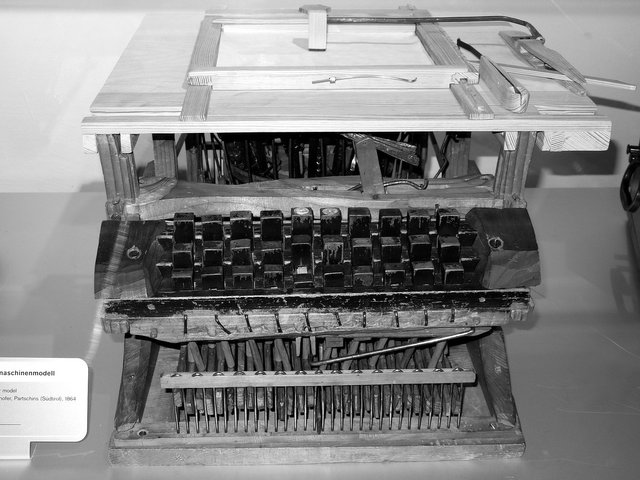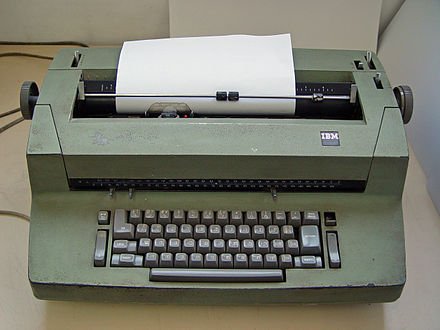Tech Legacy - Typewriters (Part 23)

Do you think the keyboard I'm punching out letters on right now in writing this article just came out of nowhere? No chance. In fact it has been a long time in the making, I know for a fact that the keyboard I'm using on my MacBook Pro is much different than one found on an early model typewriter but it performs the same function for the most part.
That proves my point that the typewriter was an amazing and incredible invention that still is being used today in the form of a modern computer keyboard. What an invention!
A typewriter is a mechanical or electromechanical machine for writing characters similar to those produced by printer's movable type. Typically, a typewriter has an array of keys, and pressing one causes a different single character to be produced on the paper, by causing a ribbon with dried ink to be struck against the paper by a type element similar to the sorts used in movable type letterpress printing.
Commonly a separate type element (called a typebar) corresponds to each key, but the mechanism may also use a single type element (such as a typeball) with a different portion of it used for each possible character. At the end of the nineteenth century, the term typewriter was also applied to a person who used a typing machine.[1]
Typewriters began as purely mechanical devices built to serve a singular purpose in dropping letters on a page. Its how humanity was able to develop a wealth of classical fiction and distribute knowledge throughout the world following the precursor invention, the printing press.
IBM and Remington Rand electric typewriters were the leading models until IBM introduced the IBM Selectric typewriter in 1961, which replaced the typebars with a spherical element (or typeball) slightly smaller than a golf ball, with reverse-image letters molded into its surface. The Selectric used a system of latches, metal tapes, and pulleys driven by an electric motor to rotate the ball into the correct position and then strike it against the ribbon and platen. The typeball moved laterally in front of the paper, instead of the previous designs using a platen-carrying carriage moving the paper across a stationary print position.
I dont know about you but this topic sort of fascinates me. To think that IBM sort of reinvented the typewriter giving it a modern upgrade makes a lot of sense as they would later move beyond words printed on a page towards words printed on a computer file.
What do you guys think about the typewriter? Did it serve its purpose perfectly? Do we not owe a lot to the fact that without it we may never have computer keyboards serving the same function in the modern day?
Thanks for reading!
Source:
Wikipedia

To listen to the audio version of this article click on the play image.

Brought to you by @tts. If you find it useful please consider upvoting this reply.